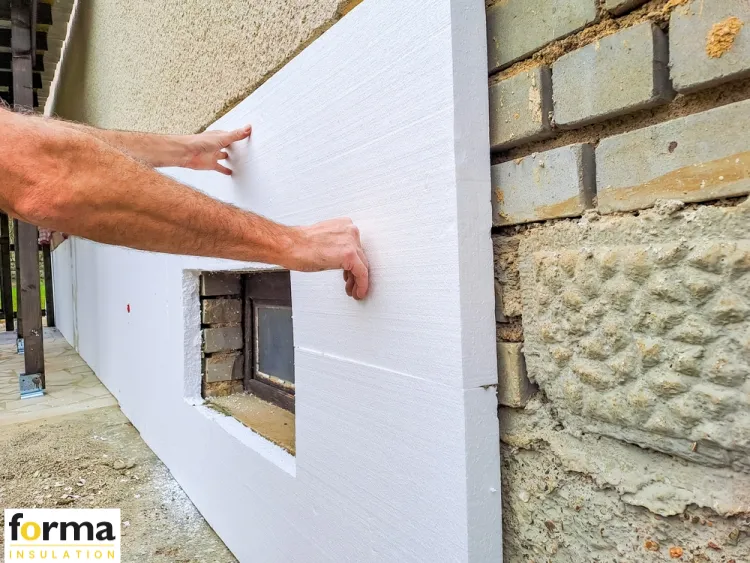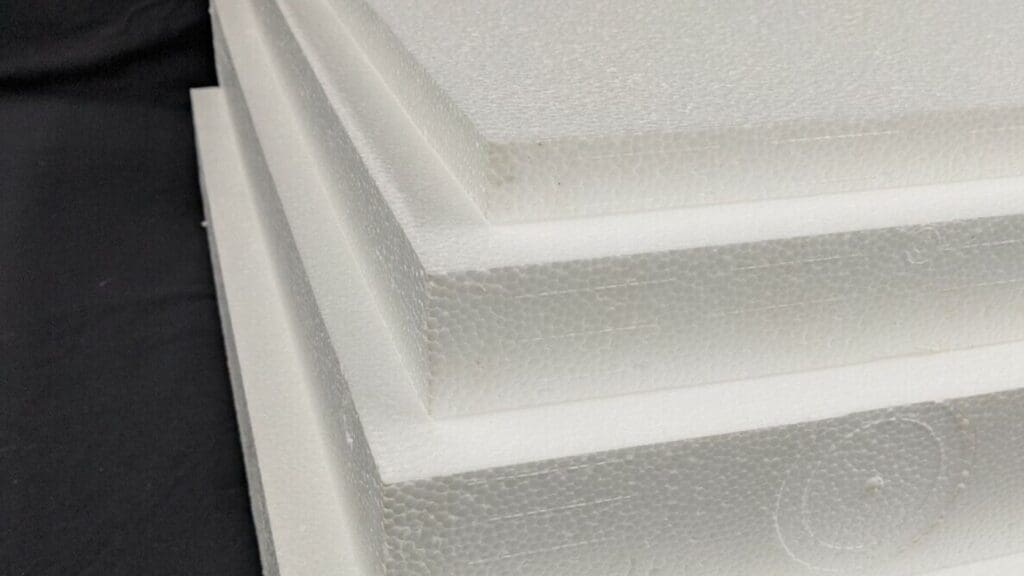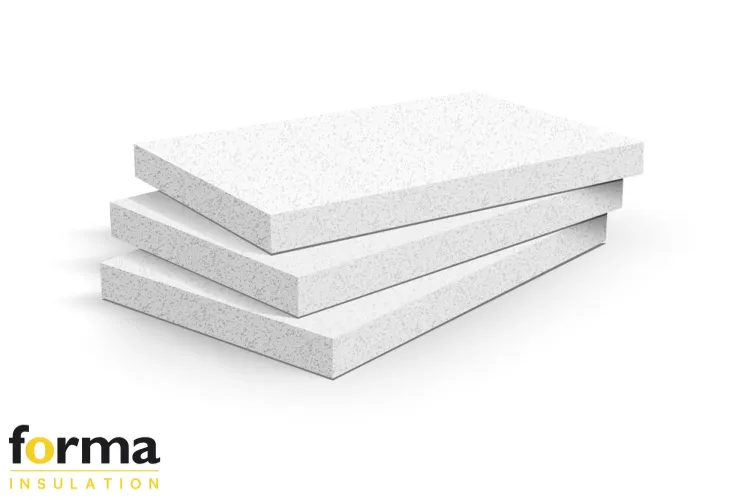Polystyrene insulation board is a vital material in modern construction, known for its superior thermal performance, lightweight structure, and affordability. Used widely in residential, commercial, and industrial applications, these boards provide excellent insulation for walls, roofs, floors, and ceilings. This article explores the types, sizes, thermal properties, and uses of polystyrene insulation boards, with detailed insights on EPS and XPS variants.
EPS Polystyrene Insulation Board Sizes
Polystyrene insulation boards come in a variety of sizes to suit different construction needs. The most common dimensions include:
- Length: 1000 mm to 2440 mm
- Width: 500 mm to 1220 mm
- Thicknesses: 25mm, 50mm, 75mm, 100mm, and custom sizes up to 1000mm.
Among the most popular options are:
- Polystyrene Insulation Board 25mm – Used in areas requiring light insulation or layering
- Polystyrene Insulation Board 50mm – Ideal for residential walls and roof thermal insulation
- Polystyrene Insulation Board 100mm – Suitable for industrial and high-performance applications
These variations provide flexibility in meeting different thermal resistance requirements across multiple building types..
Read more about: eps polystyrene sheets

polystyrene foam board insulation
Polystyrene foam board insulation refers to both expanded (EPS) and extruded (XPS) forms of polystyrene. These foam boards are easy to install, lightweight, and can be cut to fit specific architectural needs. They are widely used in wall cavities, external wall cladding, roofing systems, and under-slab applications.
EPS (Expanded Polystyrene) is made by expanding beads inside a mold, resulting in a lightweight structure. XPS (Extruded Polystyrene), on the other hand, is produced through extrusion, giving it a more uniform and moisture-resistant structure.
Why Polystyrene Is Ideal for Thermal Insulation
Polystyrene insulation is a preferred material in building construction due to:
- High thermal resistance (R-value), reducing energy consumption
- Lightweight yet durable structure, easy to handle and transport
- Resistance to moisture, mold, and decay, especially in XPS
- Cost-effectiveness, especially in large-scale projects
- Compatibility with other building materials
Its excellent insulating properties help maintain consistent indoor temperatures, which is especially beneficial in extreme climates like those in the Middle East.
Types of Polystyrene Insulation
Polystyrene insulation boards are mainly classified into two types:
1. EPS (Expanded Polystyrene)
EPS boards are made from pre-expanded polystyrene beads and are widely used due to their affordability and versatility. They are ideal for cavity wall insulation, floor insulation, and external insulation systems.
2. XPS (Extruded Polystyrene)
XPS boards have a closed-cell structure, providing superior water resistance and compressive strength. They are perfect for below-grade applications, roofing, and areas exposed to moisture.
- Length: 1200 mm to 2440 mm
- Width: 6000 mm
- Thicknesses: 30mm, 50mm, up to 100m
Both types offer excellent thermal insulation, but XPS is typically chosen for more demanding applications.
You can also learn more about: EPS blocks

Polystyrene Insulation Board Price
The cost of polystyrene insulation boards varies depending on the type (EPS or XPS), thickness, and supplier. While EPS is generally more affordable, XPS offers better long-term performance in harsh conditions. It’s essential to select the type that best matches your insulation and budget requirements.
For tailored quotes and bulk pricing, suppliers like Formainsulation in Saudi Arabia offer a range of polystyrene products, including accessories for proper installation.
Technical Properties of EPS and XPS Boards
EPS and XPS differ in their physical and thermal performance. Below is a comparison of key technical properties:
- Thermal Conductivity: EPS offers ~0.035 W/mK, while XPS provides better performance at ~0.030 W/mK.
- Water Absorption: EPS absorbs more water compared to XPS, which has very low water absorption, making it ideal for damp environments.
- Compressive Strength: EPS ranges from 70-250 kPa, suitable for standard applications. XPS, on the other hand, delivers 250-500 kPa, making it suitable for load-bearing insulation needs.
- Density: EPS has a density range of 10-30 kg/m³, while XPS is denser, at 30-50 kg/m³.
- R-Value per Inch: EPS typically provides around 3.6, whereas XPS delivers a higher R-value of about 5.0, ensuring better insulation performance per unit thickness.
Polystyrene Microbeads Suppliers
Polystyrene microbeads are used in lightweight concrete, packaging, bean bags, and decorations. For construction, these beads are often mixed with cement for lightweight insulating screeds. In Saudi Arabia, several suppliers including Formainsulation provide high-quality microbeads for industrial and construction applications.
These beads are durable, lightweight, and offer good insulation, making them suitable for both standard and specialized uses in building materials.
Polystyrene Insulation Board R Value
The R-value indicates how well a material resists heat flow. The higher the R-value, the better the insulation. EPS has an R-value of approximately 3.6 per inch, while XPS boards provide about 5.0 per inch.
This makes XPS polystyrene insulation board more effective in applications where space is limited but high insulation is required. However, EPS still performs well in standard wall and roof systems, especially in dry environments.
Polystyrene Sheets for Various Applications
Polystyrene sheets are available in different thicknesses and sizes and can be customized for various uses. They are commonly used in:
- Cavity wall insulation
- Underfloor heating systems
- Sound insulation
- Roof insulation systems
Polystyrene sheets offer flexibility in construction and are compatible with other building materials like plasterboard, cement render, and waterproofing membranes.
Whether you’re looking for Polystyrene Insulation Board 100mm for an industrial site or Polystyrene Insulation Board 25mm for a small home improvement project, polystyrene remains a reliable and adaptable choice.
Common Questions
1. Is polystyrene insulation board fire-resistant?
Polystyrene boards are treated with flame-retardant additives to improve fire resistance, but they must be installed behind fire-resistant barriers such as drywall or concrete.
2. Can polystyrene insulation be used outdoors?
Yes, but it must be properly protected from UV exposure and mechanical damage, typically using weatherproof cladding or protective membranes.
Learn more in detail about: Polystyrene Foam
